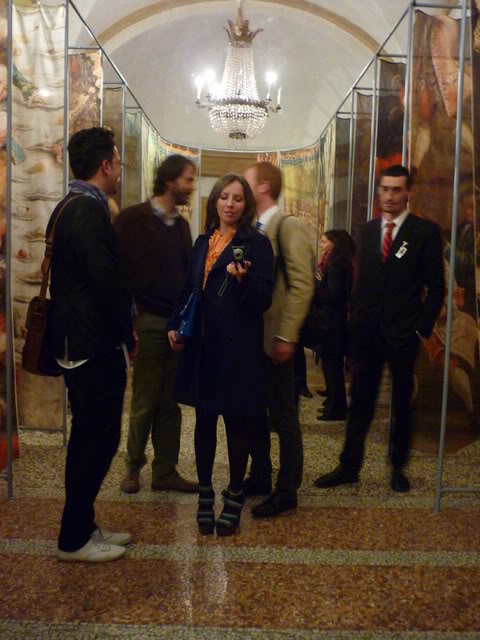
That classical music is so rarely taken outside of the concert hall is in no way due to a lack of wanting: rather an ‘acoustics is everything’ approach means that orchestras remain firmly within concert hall walls. In an intriguing marriage between music and architecture, Zaha Hadid was commissioned by the Manchester International Festival to create a performance space for some of the most well-known pieces of chamber music ever written: Bach’s suites for solo cello, piano, and violin.
Hadid’s striking white ribbon layers and wraps around itself to create both a stage for the performer as well as a space for the audience. The ribbon consists of a translucent fabric membrane articulated by an internal steel structure suspended from the ceiling.
There has already been much discussion of Hadid’s concert hall, situated in a large room on the top floor of the Manchester Art Gallery, and it’s successes or failures as a piece of architecture. But certainly, as per the design brief, the most important consideration must be whether the structure works as a concert hall.
I was lucky enough to be one of only 200 in attendance for the evening of Bach’s cello suites performed by virtuoso cellist, Jean-Guihen Queyras, and given the we were essentially sat in a large black box, the acoustics were surprisingly well-balanced. This is surely thanks to the project’s acoustic engineers, Sandy Brown Associates, who enabled minimal sound absorption and maximum sound reflection through use of lightweight fabric as well as shaped acrylic panels hidden within the fabric.
While the structure is intriguing even when not in use, it truly comes into its own as a performance space, enveloping both performer and spectators, making an audience of 200 feel positively intimate. Perhaps more surprising is that the structure heightens, not distracts, the performance: I’ve never been to a recital where audience attention was so focused, not a single cough throughout. With this installation, Hadid has created architecture as Goethe famously referred to it: as ‘frozen music’.
On the other hand, the raison d’être of theatre company Punchdrunk is to produce site-specific works of interactive theatre. Their last show at Battersea Arts Centre, Masque of the Red Death, sold out a seven-month run and was a huge critical success.
For their MIF piece, Punchdrunk collaborated with documentary film-maker Adam Curtis to produce It Felt Like A Kiss. Shepherded into a massive, dilapidated office building in a group of 9, we’re sent in a lift to the 6th floor and told only to ‘stick together’. This is a ‘promenade’ piece of theatre, which means the spectating takes place on the hoof.
The gutted building has been completely transformed – the attention to detail is spectacular – there are abandoned CIA offices full of dossiers and documents, living rooms with TVs that never turn off – all very much like abandoned film sets. Strangely for a piece of theatre, there are no actors.
Once we arrive at the evening’s piece de resistance, Adam Curtis’ 35-minute documentary, things become a bit clearer. The documentary, on how
The atmosphere is incredibly tense throughout, yet we’re always waiting for actors who never appear - a bit like Godot, but scarier and more frustrating. As a piece of design, IFLAK is simply incredible and there isn’t anything else like it, but as a theatrical performance, I’m still wondering, “was that it?”
Flailing Trees is an installation of 21 inverted willow trees in a 12 x 12 ft concrete base. The installation was commissioned by MIF and created by Gustav Metzger and claims to serve as a ‘plea for reflection and a plaintive cry for change’. Interestingly for a public sculpture, Flailing Trees grew out of the winning entry to The Manchester Open, the Festival’s open commission call, submitted by CUBE (Centre for the Urban Built Environment) and Taylor Young (Urban Planners and Architects).
Unfortunately, Flailing Trees is not the right scale for the
While the MIF doesn’t have quite the buzz of the Edinburgh Festival, Edinburgh should be worried indeed, as this relative newcomer to the world of arts festivals is pulling out all the stops with some truly magnificent performances.






No comments:
Post a Comment